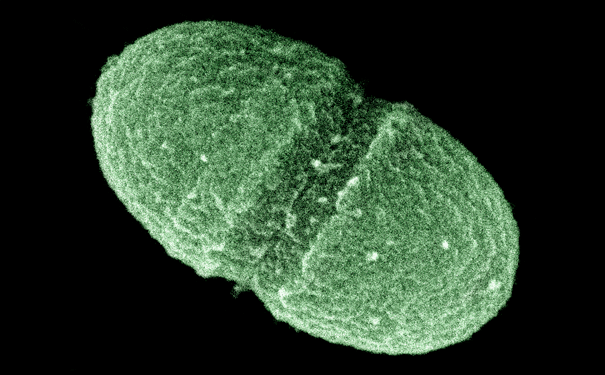
The bacterium, Enterococcus faecalis, which lives in the human gut, is just one type of microbe that will be studied as part of NIH's Human Microbiome Project. Image: United States Department of Agriculture
They may be small, but they outnumber our cells.
The human body contains trillions of microbes, including bacteria, viruses, eukaryotic microbes and archaea. They certainly outnumber us- a group of 200 researchers, organised by the National Institutes of Health in the US, have mapped the microbial makeup of a healthy human through the Human Microbiome Project Consortium and found that these microbes outnumber our own cells 10 to one.
However, few of these pathogens are dangerous to human health. Most coexist with their host and the rest of the human microbiome, which is the collection of the microbes living on or in our bodies.
In order to map the microbiome, samples were taken from 242 volunteers from a variety of sites on their bodies (15 on men and 18 on women). With such a large number of pathogens, the researchers analysed them with DNA sequencing machines, instead of isolating and culturing individual species.
By focusing on the microbial signature, they were able to eliminate human DNA and examined the microbial diversity. It is estimated that there are over 10,000 microbial species are living within the human ecosystem and the researchers believe that they have managed to identify 81 to 99 percent of the genera of micro-organisms.
They also outnumber us in terms of genetic information — while our genomes carry 22,000 protein coding genes, our microbiome contributes around eight million of these genes. The microbes at any of these sites- ears, gut, mouth and elbows to name a few- can be as different from each other as microbes from the ocean and the desert, according to Professor Rob Knight from the University of Colorado in the US.
With so many microbes interacting with our bodies, it’s not surprising that any shifts within community composition can affect our health. The skin microbiome, for example, can influence the development of psoriasis, while the gut microbiome can affect Crohn’s disease.
“By better understanding this microbial variation we can begin searching for genetic biomarkers for disease,” Knight says. “Because the human microbiome is much more variable than the human genome, and because it also is much easier to modify, it provides a much more logical starting point for personalised medicine.”
By sequencing the DNA of all the microbes in a particular community, via metagenomic sequencing, the researchers were able to study the metabolic capabilities encoded in the genes of the each community. This will make it easier to define their roles, how they vary and how they interact with each other and their host.
Source: Eureka Alert






